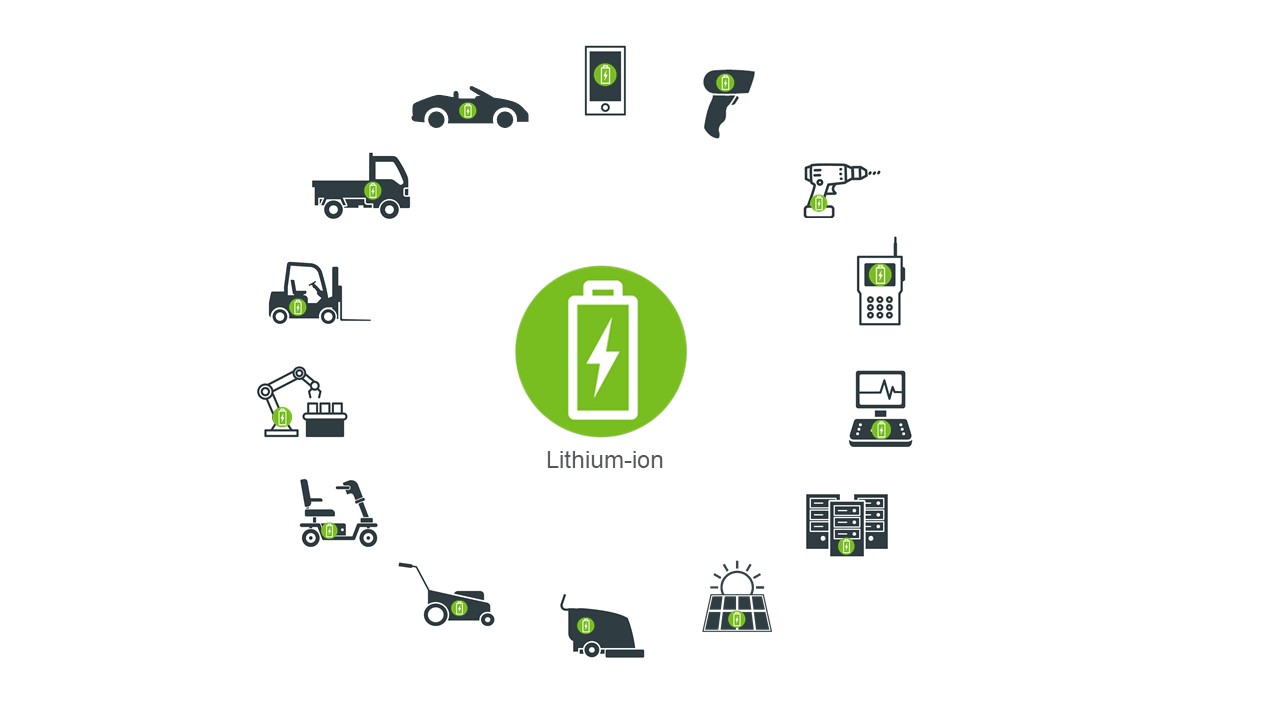Our recent Li-ion Battery 101 blogs have focused heavily on safety, and for our last blog of the series “Li-ion Battery Regulations,” we’ll explain why. This blog will provide a high-level overview of the major battery regulations and associations that exist to ensure lithium-ion (Li-ion) batteries are safe for their intended use.
Today, it is impossible to envision a world without the presence of the lithium-ion battery. For over two decades, small size Li-ion battery packs have been used in cell phones, laptops, cameras, and various handheld devices. Because Li-ion offers several benefits such as high energy density by volume and weight, high cycle life, relatively low self-discharge, and low maintenance, it is being utilized in a broad spectrum of applications outside consumer electronics, such as electric and hybrid vehicles, data storage battery backup, medical devices, military applications etc.

Despite its prevalence, use of lithium-ion battery packs does come along with some risk, as illustrated by the FAA document on lists of incidents with smoke, fire, extreme heat, or explosion involving Li-ion batteries. [1] Regulations have been put in place to mitigate these risks during transportation, as well as commercial and noncommercial use, in order to keep Li-ion batteries safe. These regulations can be mandatory, as in Transportation Regulation or commonly known as UNDOT 38.3 and enforced through government departments as USDOT. Regulations can also be voluntary, market driven as in UL 2054, UL 62133, or driven by the end device requirement.
IEC, or International Electrotechnical Commission, is one of the largest standard development bodies that establishes the compliance criteria that batteries must meet. Compliance is checked through battery specification reviews as well as testing. These standards provide battery manufacturers a common minimum baseline of requirements and give battery users a common minimum baseline of expectations. Two of the more common Li-ion battery standards are UL 2054 and IEC 62133. UL 2054 has been around 1997, whereas 62133 was first released in 2002 with a major update in 2012.
As mentioned earlier, Li-ion batteries are being used in a variety of portable, motive, and stationary applications. As Li-ion expanded into new applications, it became clear that one dedicated battery standard would not work for all Li-ion batteries. For example, a Li-ion battery used in a tablet or smart phone will experience a very different environment then when used in a hoverboard. As devices that use Li-ion batteries continue to grow, so will the number of applicable standards. Even as we write this blog, technical panels are busy creating new standards and/or updating existing ones.
Below is a table showing some of the current UL standards along with the end device category for which they apply.
 As the above table illustrates, there are several different UL standards that have been established for various applications. These regulations exist to hold battery manufacturers accountable in producing safe and reliable batteries. Since the commercialization of the Li-ion battery in the 1990’s to its expanding popularity today, these mighty batteries have been changing our lives. Whether they are used in cell phones or heart pumps, above all else, these batteries must be made safe for human use.
As the above table illustrates, there are several different UL standards that have been established for various applications. These regulations exist to hold battery manufacturers accountable in producing safe and reliable batteries. Since the commercialization of the Li-ion battery in the 1990’s to its expanding popularity today, these mighty batteries have been changing our lives. Whether they are used in cell phones or heart pumps, above all else, these batteries must be made safe for human use.
At Inventus Power, we have an experienced team to help navigate the maze of Li-ion battery regulation. Our Technical Center Asia in Guangzhou, China is accredited by UL to perform testing per UL 2054 and IEC 62133 and by TUV to IEC/EN/UL 60950-1, IEC62133 standards. We work with standard drafting organizations like UL and test laboratories like TUV to bring clarity to the regulatory requirement of Li-ion batteries. If you have a specific question about battery regulations, please contact us at regulatory@inventuspower.com.
This concludes our blog series on the Li-ion Battery 101. If you’ve missed any of our previous blogs you can find them here at Li-ion Battery 101. Thanks for reading and sharing our content!
Written by: Ismat Jahan, Compliance Engineer, Inventus Power
1. https://www.faa.gov/hazmat/resources/lithium_batteries/media/Battery_incident_chart.pdf
